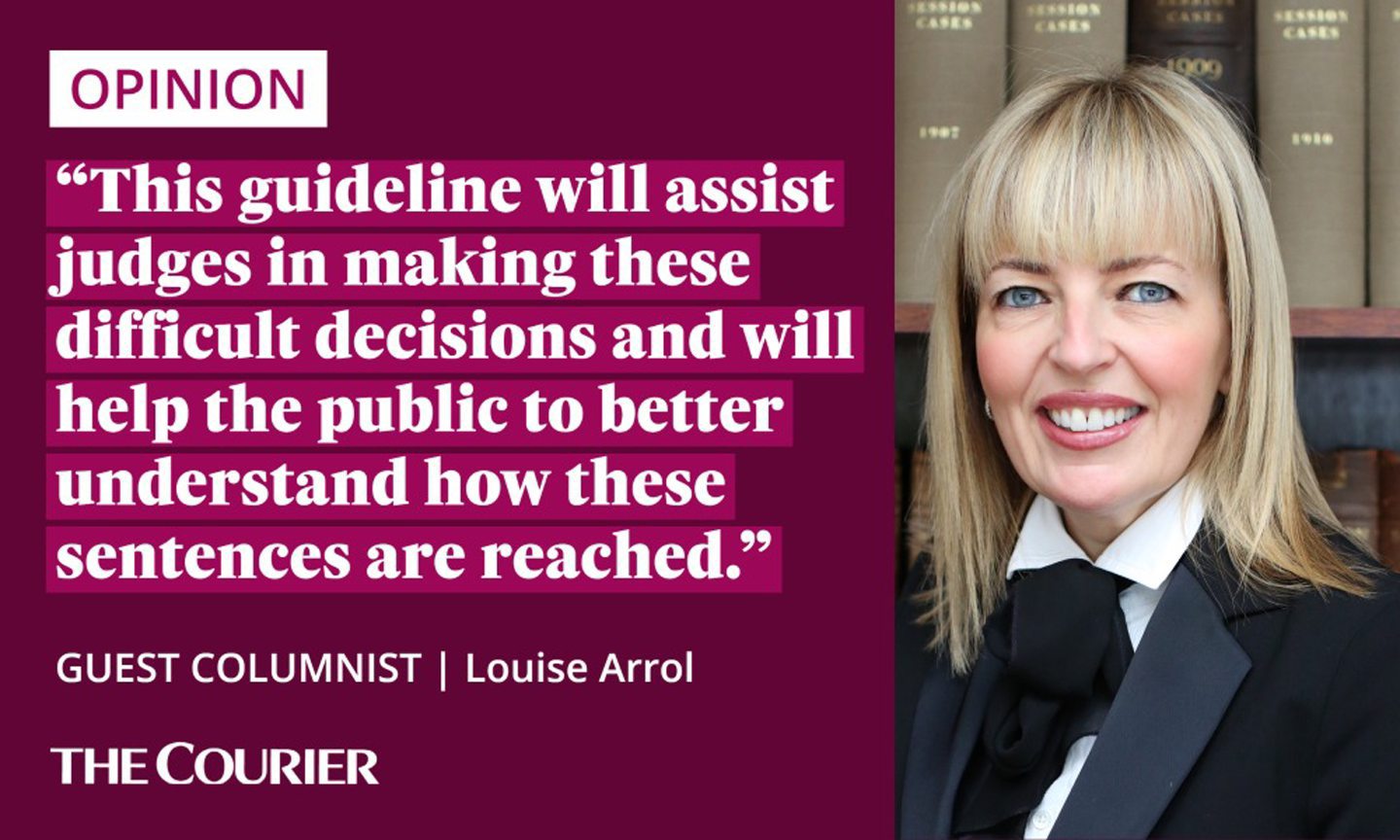As an advocate, I work primarily in the High Court dealing with criminal cases.
But today I am writing in my role as a member of the Scottish Sentencing Council.
One of the council’s key roles is to prepare sentencing guidelines for the Scottish courts.
To date, we have published three general guidelines.
These are on the principles and purposes of sentencing, the process of deciding sentences and sentencing young people.
We are now publicly consulting on Scotland’s first sentencing guideline for specific offences.

These are the statutory offences of causing death by driving which are: causing death by dangerous driving; causing death by careless driving when under the influence of drink or drugs; causing death by careless or inconsiderate driving; and causing death by driving: unlicensed, uninsured, or disqualified drivers.
Death by driving offences are of concern to the public and can have a devastating effect on the families of victims.
Guidelines will assist judges with appropriate sentencing
How to determine the most appropriate sentence for these offences can be a challenge for judges.
In all cases, judges must consider the harm caused (or which might have been caused) by an offence, and the culpability, or level of blame, of the offender.
In death by driving cases, the harm (death) is very high, while the culpability can vary widely from a sustained course of dangerous driving to a moment’s distraction.
This guideline will assist judges in making these difficult decisions and will help the public to better understand how these sentences are reached.
The draft guideline has three steps for each offence.
A table at step one (or two tables for offences of causing death by careless driving when under the influence of drink or drugs) sets out the features which determine the level of seriousness (A, B or C) of the offence, such as racing or knowingly driving a dangerous vehicle.
A table at step two sets out the sentencing ranges for each level of seriousness.
The table at step three sets out some factors that might aggravate (increase) or mitigate (lower) the sentence, for example whether the offender has previous convictions or has a previously good driving record.
Establishing a process will increase predictability
Setting out the process for reaching a sentence, and the factors to be taken into account, will increase the predictability of the sentences for all those involved in a case.
Once finalised, this guideline will also help to shape a template for future offence guidelines.
This public consultation is a chance for people to have a say, not only on the death by driving guideline, but also on the format for other offence guidelines.
We will soon be launching our consultation on our first offence guideline, which covers offences of causing death by driving. You can read more about this guideline and our other guidelines in progress here ➡️ https://t.co/NwxQoz9DoO https://t.co/kAlv5yuDK2
— Scottish Sentencing Council (@ScotSentencing) August 17, 2022
A consultation paper, the draft guideline, and a draft impact assessment are available on the council’s website.
The consultation paper sets out the background to the guideline, explains the reasons for the approach taken, and asks a number of questions seeking your views.
This consultation is open until Tuesday November 22, and we will carefully consider each response that we receive.
Louise Arrol is an advocate member of the Scottish Sentencing Council. Since 2005, she has appeared almost exclusively in the High Court conducting criminal trials and criminal appeals.











